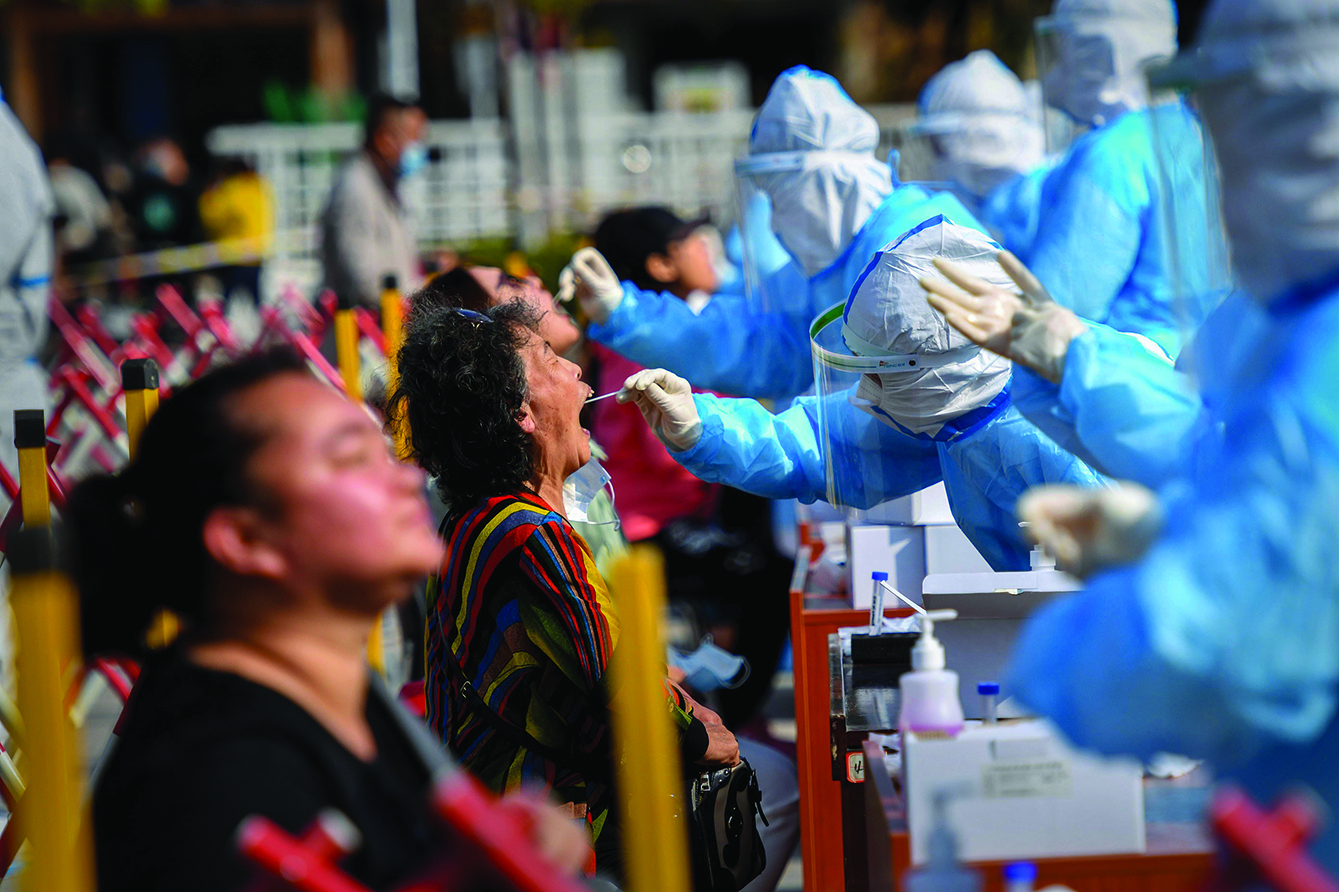
BRISBANE/HONG KONG: The coronavirus that causes COVID-19 can survive on items such as banknotes and phones for up to 28 days in cool, dark conditions, according to a study by Australia's national science agency. Researchers at CSIRO's disease preparedness center tested the longevity of SARS-CoV-2 in the dark at three temperatures, showing survival rates decreased as conditions became hotter, the agency said yesterday.
The scientists found that at 20 degrees Celsius, SARS-CoV-2 was "extremely robust" on smooth surfaces - like mobile phone screens - surviving for 28 days on glass, steel and plastic banknotes. At 30 degrees Celsius, the survival rate dropped to seven days and plunged to just 24 hours at 40 degrees Celsius. The virus survived for shorter periods on porous surfaces such as cotton - up to 14 days at the lowest temperatures and less than 16 hours at the highest - the researchers said.
This was "significantly longer" than previous studies which found the disease could survive for up to four days on non-porous surfaces, according to the paper published in the peer-reviewed Virology Journal. By comparison, Influenza A virus has been found to survive on surfaces for 17 days. "It really reinforces the importance of washing hands and sanitizing where possible and certainly wiping down surfaces that may be in contact with the virus," said the study's lead researcher Shane Riddell.
Trevor Drew, director of the Australian Centre for Disease Preparedness, said the study involved drying samples of the virus on different materials before testing them, using an "extremely sensitive" method that found traces of live virus able to infect cell cultures. "This doesn't mean to say that that amount of virus would be capable of infecting someone," he told public broadcaster ABC. He added that if a person was "careless with these materials and touched them and then licked your hands or touched your eyes or your nose, you might well get infected upwards of two weeks after they had been contaminated".
Drew said there were several caveats including that the study was conducted with fixed levels of virus that likely represented the peak of a typical infection, and there was an absence of exposure to ultraviolet light, which can rapidly degrade the virus. Humidity was kept steady at 50 percent, the study said, as increases in humidity have also been found as detrimental to the virus.
"So in the real world results would likely be shorter than what we were able to show," Riddell told Reuters. Researchers said given that proteins and fats in body fluids can also sharply increase virus survival times, their study may help explain the apparent persistence and spread of the virus in cool environments like meat-packing facilities.
According to the CSIRO, the virus appears to primarily spread through the air but more research was needed to provide further insights into the transmission of the virus via surfaces. "While the precise role of surface transmission, the degree of surface contact and the amount of virus required for infection is yet to be determined, establishing how long this virus remains viable on surfaces is critical for developing risk mitigation strategies in high contact areas," CSIRO's Debbie Eagles said.
The main message remains that "infectious people are far, far more infectious than surfaces", Drew told the ABC. "But nevertheless, it may help to explain why even when we got rid of the infectious people, we do occasionally get these breakouts again, sometimes even in a country which is considered to be free," he said.
Meanwhile, an affordable anti-microbial drug used to treat stomach ulcers and bacterial infections has shown promise in combatting the coronavirus in animals, scientists in Hong Kong announced yesterday. Researchers set out to explore whether metallodrugs - compounds containing metal that are more commonly used against bacteria - might also have anti-viral properties that could fight the SARS-CoV-2 coronavirus.
Using Syrian hamsters as tests subjects, they found that one of the drugs, ranitidine bismuth citrate (RBC), was "a potent anti-SARS-CoV-2 agent". "RBC is able to lower the viral load in the lung of the infected hamster by tenfold," Hong Kong University researcher Runming Wang told reporters on Monday as the team presented their study. "Our findings demonstrate that RBC is a potential anti-viral agent for COVID-19."
The coronavirus has killed more than a million people since it first emerged in China last December and then spread across the globe. As scientists scramble to find a vaccine, they have also been scouring readily available drugs that might alleviate symptoms caused by the COVID-19 disease or help the body fight infection.
Remdesivir, a broad-spectrum antiviral drug, and dexamethasone, a type of corticosteroid, have both been identified as having some success against the virus. Both were used by doctors to treat US President Donald Trump after he contracted COVID-19. But they have drawbacks. Remdesivir is expensive and there is a global shortage while dexamethasone has immunosuppression effects that are risky for all but the most ill patients. Other drug cocktails have shown liver damage can be a risk.
The Hong Kong scientists said RBC was a commonly available drug used against stomach ulcers with a safe and comprehensive pharmacological profile. "It's been used for decades so it's pretty safe," Wang said. They added that their research, which has been published in the journal Nature Microbiology, suggested other metallodrugs might also have success against the virus and should be further explored. - Agencies










